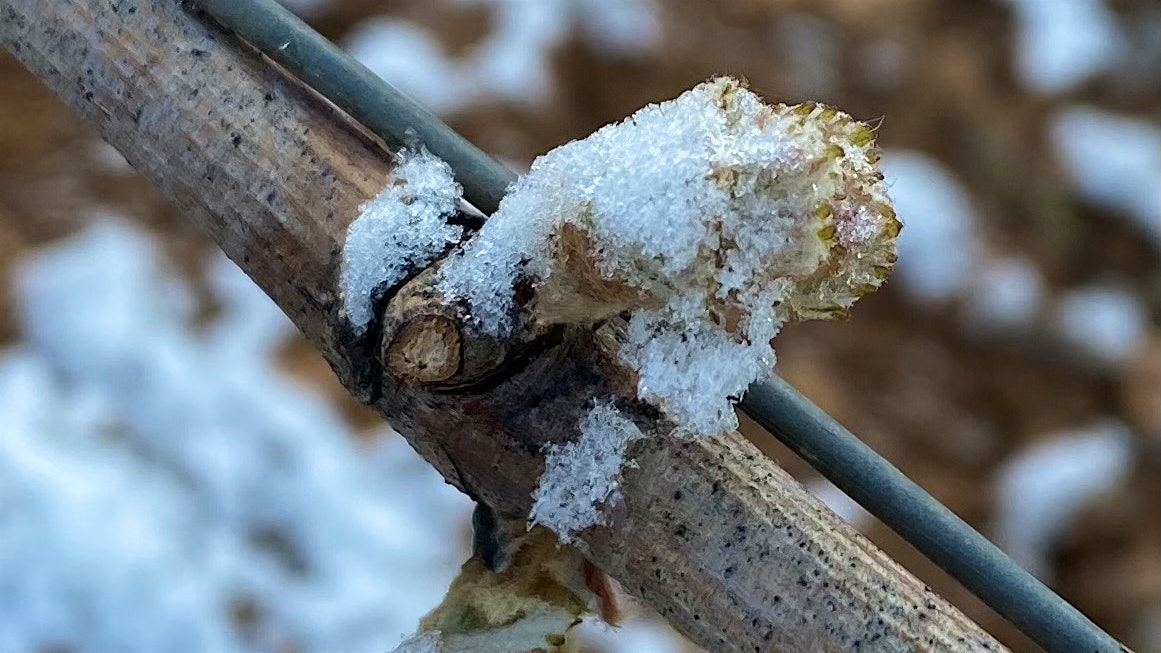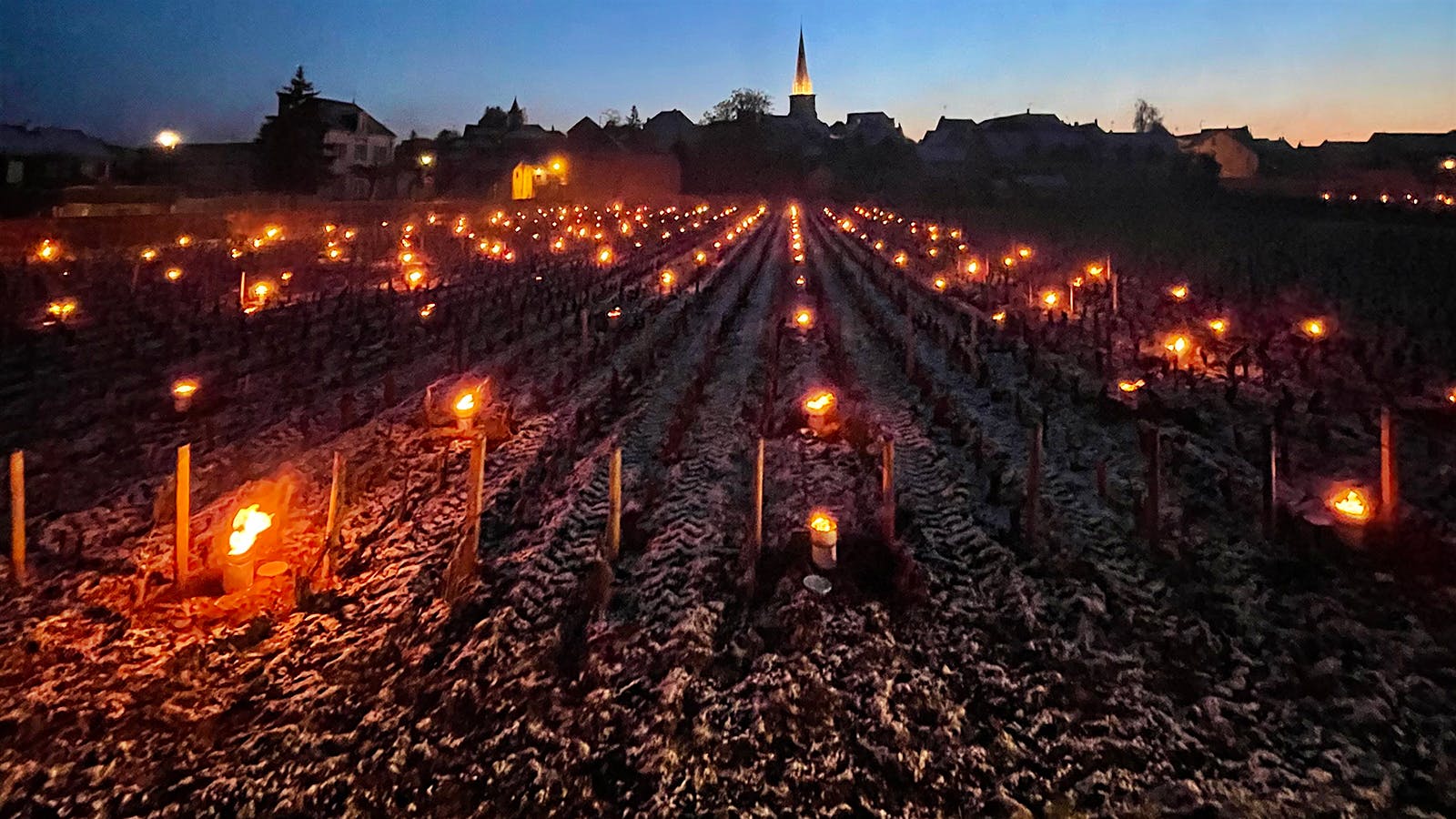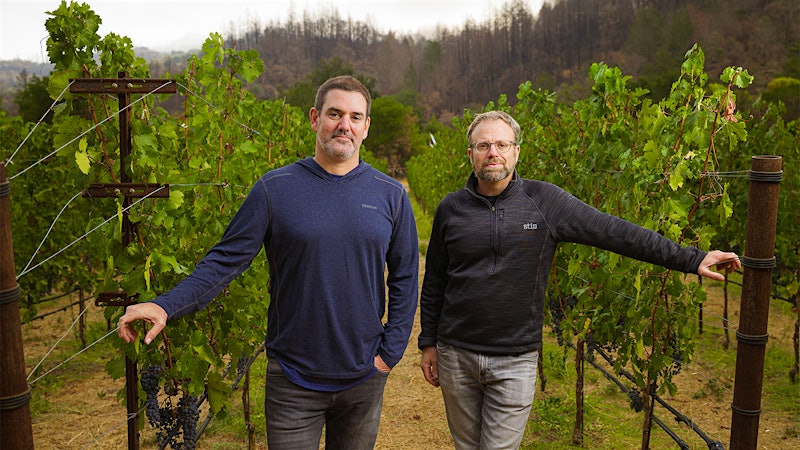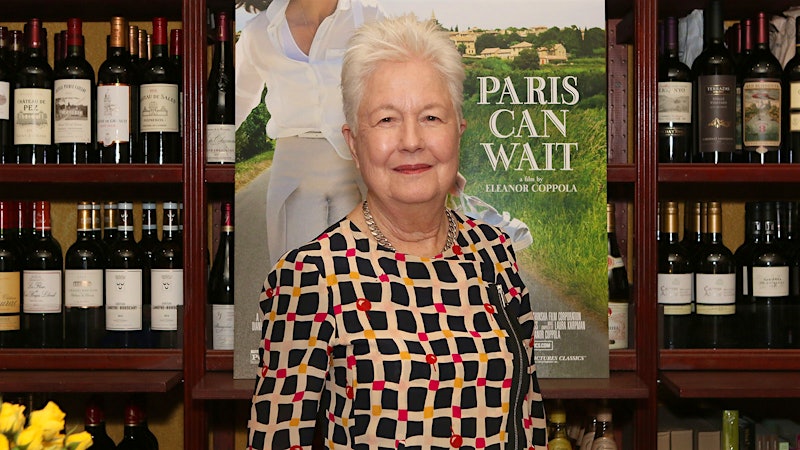Freezing temperatures during the early morning hours of April 6, 7 and 8 brought severe frosts to Burgundy vineyards, damaging Chardonnay and Pinot Noir buds from the Mâconnais to Chablis and setting up 2021 as a challenging vintage for the region.
Growers scrambled to light candles in the vineyards in the hopes of raising the near-ground temperatures by a degree, yet even with protection, the frost killed many young buds. Tuesday night brought the most devastation, when snow and rain exacerbated the damage from the frost; humid conditions render buds even more susceptible to destruction. As the Chardonnay vines were more advanced in their vegetative growth than the Pinot Noir, losses in those sites were more widespread.
“Our first estimation is that, despite all the efforts, there has been significant damage,” reported Véronique Drouhin-Boss, who oversees winemaking for Joseph Drouhin. “In Montrachet, it is a little early to tell, but for sure there will be some important loss. The snow that fell last night [April 6] was very bad news. In Chablis, the vines that were not protected by candles or water spray suffered big time, it seems.”

Christian Moreau of Domaine Christian Moreau & Fils, his son Fabien and their team burned 2,000 candles among their parcels in Chablis the night of April 7, including premier cru Vaillons and grand cru Les Clos. Moreau estimated that they lost between 20 and 25 percent of the buds in the protected plots, and 50 to 60 percent—maybe more—amid the unprotected vines.
The problem, Moreau explained, was “black frost” (gelée noir), which is caused by a very cold air mass and low humidity. When there is moisture in the air, ice crystals will form on the vines (hoar frost), but with black frost it is the plant tissue that freezes, subsequently turning black and dying. Black frost “will hurt you everywhere from the bottom to the top of the hill with no difference,” he said.
“Indeed, it is a disaster. Too soon to evaluate the damage, but it will be significant,” said Erwan Faiveley, CEO of Domaine Faiveley. “Obviously the Chardonnay will suffer more than the Pinots, as the buds were already wide opened. Chablis is wiped out, Puligny, Chassagne, Meursault, well … I don't know what will be left.”
“But the Pinots will suffer a lot as well,” Faiveley said. “[It was] -7° C in certain parts of Nuits-St.-Georges last night. Not much can resist those temperatures. It is definitely worse than 2016.” (Due to a late-April frost, yields in the Côte d’Or were down 50 percent in 2016.)
In Givry, Domaine du Cellier Aux Moines owner Philippe Pascal noted that the previous week had been warm and sunny, advancing the budbreak. “For the Pinot Noir in the Clos du Cellier, 50 percent of the buds were opened and are dead now,” he said. “The Chardonnay, in Puligny-Montrachet, Chassagne or Montagny were unfortunately more opened—80 percent—so the impact might be even higher.”
It will take about two to three weeks to fully assess the damage and determine how many secondary buds might produce grape bunches. Nonetheless, Jacques Devauges, director of Domaine des Lambrays in Morey-St.-Denis, explained that secondary buds are less regular, produce fewer grapes and are more susceptible to fungal diseases. “It’s going to be a difficult season.”
The early morning of April 8 brought frost damage to France’s Rhône Valley as well. “Like too many of our friends and fellow vintners across the country, we have been badly hit by the frost in the early hours of [April 8],” reported Château La Nerthe commercial director Christophe Bristiel via email. “[About 75 acres], mostly located in the lower part of the estate, in front of the château itself, have literally been burned by the frost."
”Fortunately, some of our key plots, including Clos de Beauvenir—where the shoots had really grown over the last 10 days—and La Crau have not been affected."
—with additional reporting by James Molesworth
Stay on top of important wine stories with Wine Spectator's free Breaking News Alerts.












